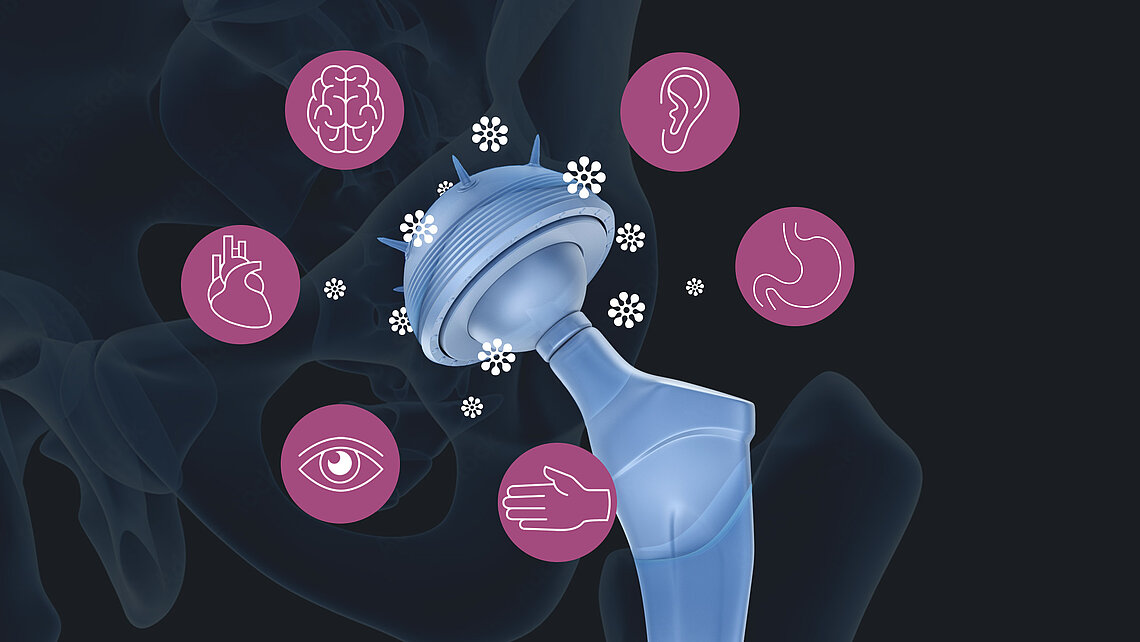Cobalt toxicity after hip arthroplasty
A recent systematic review by Crutsen et al. summarized and categorized all systematic symptoms of prosthetic hip associated cobalt toxicity (PHACT).
The authors identified 67 articles out of 3898 eligible for analysis. 79 case studies were extracted from the analysis; in 38 cases the cobalt toxicity was caused by Metal on Metal (MoM) bearings in primary hip replacement and in 32 cases by revision with a metal head following a primary ceramic head.
The systemic symptoms caused by cobalt toxicity are multifaceted:
- neurological (central and peripheral, sensory),
- cardiovascular,
- gastroenterological,
- musculoskeletal,
- skin/hair,
- thyroid,
- mental,
- psychosocial,
- and other.
The most affected systems are the sensory and cardiovascular systems. From the sensory system, hearing and visual abilities were most affected. In the cardiovascular group, these were dyspnoea/apnoea/orthopnoea, heart failure, and cardiogenic shock.
Although this review shows that high blood cobalt concentrations have been observed in the onset of systemic symptoms, it was not possible to establish a clear threshold for cobalt-related toxicity in this analysis.
The authors recommend close monitoring of blood cobalt concentrations in patients with MoM bearings and address the lack of knowledge about toxic blood cobalt concentrations. They also emphasize what is already published and known: the use of a metal bearing after a ceramic fracture is contraindicated.
In conclusion, the authors warn of an increasing number of hip-related cobalt toxicity cases, as there are still many patients with a MoM bearing. Clinicians and their patients need to be aware of the possible development of neurological and cardiovascular symptoms triggered by the release of cobalt ions.
📚 Reference: Crutsen JRW, Koper MC, Jelsma J, et al. Prosthetic hip-associated cobalt toxicity: a systematic review of case series and case reports. EFORT Open Rev. 2022;7(3):188-199. doi:10.1530/EOR-21-0098

